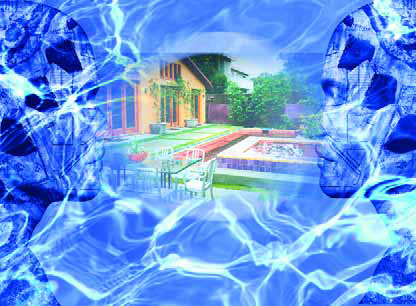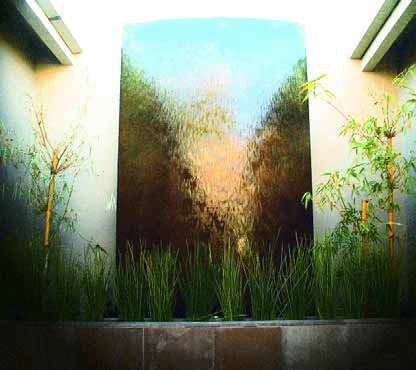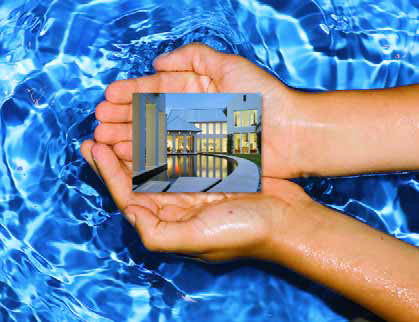column
When I teach seminars on watershape design, I always emphasize the importance of having a list of questions to ask prospective clients during initial conversations. It's a point that always seems to ignite discussion - and it usually ends up with someone in the audience asking me to provide such a document for general use. I always refuse to do so, not because I consider my approach a trade secret, but rather because everyone's business and approach to clients is a little different and the questions I ask might not be exactly the questions everyone else would (or should) ask. The issue has come up frequently enough through the years, however, that I've finally assembled
Tackling large, custom watershaping projects is all about the synergy between my clients and me: There simply must be a fit, or the process just won't work. Last month, we discussed the importance of setting up proper expectations from the moment a client makes initial contact and you pick up the phone. This time, I'll cover what happens if the early stages of the relationship go well enough that a face-to-face meeting is in order. This is the session during which I discover whether or not there's truly a
Tackling large, custom watershaping projects is all about the synergy between my clients and me: There simply must be a fit, or the process just won't work. Last month, we discussed the importance of setting up proper expectations from the moment a client makes initial contact and you pick up the phone. This time, I'll cover what happens if the early stages of the relationship go well enough that a face-to-face meeting is in order. This is the session during which I discover whether or not there's truly a
Many watershapers have a single-minded focus, doing all they can to deliver quality shells and surrounding decks to their clients. Quite often, however, that narrow focus means that inadequate space is left for planting - a problem I face quite often as a landshaper. It's clear in many cases that no thought at all was given to the landscape - and certain that no design professional was consulted before laying out and installing the hardscape. The result all too often is that there simply isn't enough room to allow for good-size planter beds. I often find myself rolling my eyes and lamenting the missed opportunities to
Many watershapers have a single-minded focus, doing all they can to deliver quality shells and surrounding decks to their clients. Quite often, however, that narrow focus means that inadequate space is left for planting - a problem I face quite often as a landshaper. It's clear in many cases that no thought at all was given to the landscape - and certain that no design professional was consulted before laying out and installing the hardscape. The result all too often is that there simply isn't enough room to allow for good-size planter beds. I often find myself rolling my eyes and lamenting the missed opportunities to
It's a given that human beings enjoy being near water. That's why waterfront property generally comes at a premium and beaches are a favored destination for those who live inland. Quite frankly, it's also why the watershaping industry exists: Even if there isn't necessarily an overwhelming desire to get wet, the desire for proximity to water is almost universal. This built-in need to be close to water is, I believe, resulting in an exciting trend that seems to be taking hold and is in some cases redefining the role that water plays in the environment: More and more often, we designers are being asked to
It's a given that human beings enjoy being near water. That's why waterfront property generally comes at a premium and beaches are a favored destination for those who live inland. Quite frankly, it's also why the watershaping industry exists: Even if there isn't necessarily an overwhelming desire to get wet, the desire for proximity to water is almost universal. This built-in need to be close to water is, I believe, resulting in an exciting trend that seems to be taking hold and is in some cases redefining the role that water plays in the environment: More and more often, we designers are being asked to
As an extension of my landshaping work in Iowa, I currently serve on a committee formed not long ago by the Johnson County Heritage Trust. Our mission is simple but immense: to preserve as much of the natural environment as possible. The committee was formed in response to development of a new subdivision in a high-quality oak/hickory forest in which relatively few invasive species had gained footholds. Our immediate task was to compile a list of acceptable plants for this community as well a list for the whole county. Of course, this story is much larger than
From the moment I set foot on this site perched on the bluffs at Del Mar, Calif., I just knew I would be the designer chosen to develop the garden: I was energized simply by being there and, more important, was at ease with the owners from the start. Immediately noticeable was the way the whole property sloped down from street level to the top of
Through the years in these pages and elsewhere, I've been a persistent critic of the shortcomings of the watershaping trades in general - and especially of the pool and spa industry in which I've operated for more than 25 years. Sometimes I've been harsher than others, but my intent has invariably been to define the difference between quality work that elevates the trade and the junk that's held back our industry's reputation. I've never named names, but I've been particularly hard on practitioners who seem eternally stuck in old ways of thinking and working: Their work seldom lines up with the best efforts of which the industry is capable. Just recently, I had a long talk with WaterShapes' editor in which we discussed the development of a new approach to



















